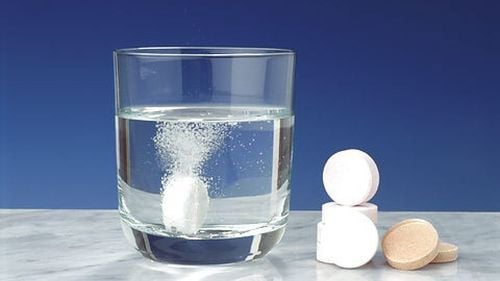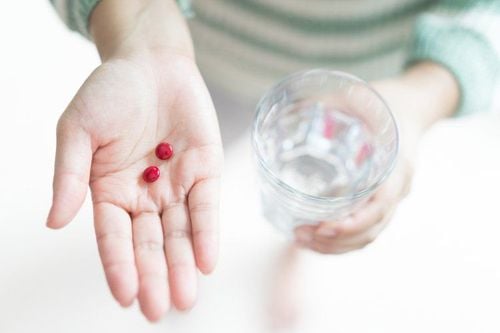1. What is Lorista 50mg?
Lorista is formulated as 50mg film-coated tablets containing:
- Active ingredient: Potassium losartan 50mg
- Excipients: Cellactose, corn starch, modified starch, microcrystalline cellulose, colloidal anhydrous silica, Hypromellose, Magnesium stearate, Talc, Titanium dioxide E171, Propylene glycol. These ingredients are sufficient for a 10mg tablet.
Pharmacodynamics
The main effects of angiotensin II receptors include vasoconstriction, sodium and water retention by the kidneys, and stimulation of the sympathetic nervous system via Noradrenalin.
Potassium losartan lowers blood pressure through antagonism of AT1 angiotensin II receptors. Specifically, potassium losartan competes for the binding sites on angiotensin II receptors located on vascular smooth muscle cells. When angiotensin II is blocked from binding to these receptors, its effects are inhibited, leading to vasodilation, reduced heart rate, decreased sodium and water reabsorption, and ultimately lower blood pressure.
Additionally, potassium losartan reduces cardiovascular mortality risks, including myocardial infarction and stroke, in hypertensive patients with left ventricular hypertrophy. It also protects renal function in type 2 diabetic patients with proteinuria.
2. Uses of Lorista 50mg
Lorista 50mg is prescribed for:
- Patients with mild to moderate hypertension.
- Monotherapy or combination therapy with other antihypertensive agents, such as Thiazide diuretics.
- Patients with hypertension who are intolerant to angiotensin-converting enzyme inhibitors (ACE inhibitors)
- Adjunctive therapy for heart failure (under investigation).
3. Contraindications of Lorista 50mg
- Hypersensitivity to any component of the medication
- History of allergy to Potassium losartan
- History of allergy to other receptor antagonists.
- Patients under 18 years of age
- Pregnant or breastfeeding women.
4. Dosage and administration of Lorista 50mg
The dosage of Lorista 50mg is adjusted based on the patient’s condition and blood pressure response.
Adults
- Initial dose: 1 tablet (50mg) once daily
- Initial dose for patients with intravascular volume depletion, hepatic impairment, or those on diuretics: ½ tablet (25mg) once daily.
- Maintenance dose: ½ - 2 tablets (25–100mg) once or twice daily.
Dose adjustments are generally not required for elderly patients or those with renal impairment.
However, the dosage should be adjusted every 1 - 2 months if blood pressureis not adequately controlled with the current dose.
Usage Instructions
Can be taken with or without food.
Follow the prescribed dosage and doctor’s instructions.
5. Precautions when using Lorista 50mg
Side effects
Prolonged or high-dose use of Lorista 50mg may cause side effects, including:
- Common:: Hypotension, insomnia, dizziness, cough, sinusitis, nasal congestion, diarrhea, indigestion. Hyperkalemia, reduced uric acid levels, decreased hemoglobin and hematocrit. Back pain, limb fatigue, muscle and bone pain.
- Less common: Neurological and psychiatric disorders such as depression, anxiety, dizziness, migraines, insomnia, fever. Skin conditions such as hair loss, dermatitis, itching, urticaria, dry skin, rash. Respiratory issues such as bronchitis, pneumonia, rhinitis, airway obstruction, sore throat, sweating, epistaxis. Conjunctivitis, vision and hearing impairment, tinnitus.
- Cardiovascular: orthostatic hypotension, chest tightness, bradycardia, tachycardia, edema. Effects on urinary system are frequent urination, nocturia, reduced libido, urinary tract infections, increased creatinine and urea levels. In addtion, loss of appetite, bloating, nausea, vomiting, gastritis, elevated liver function parameters, Gout are effects of gastrointestinal system.
- Others decreased libido, excessive sweating.
Stop the medication immediately if any side effects occur and inform the doctor or visit the nearest healthcare facility.
Precautions for using Lorista 50mg in specific patient groups:
- Exercise caution when using Lorista 50mg in the following scenarios: Dehydrated patients, those undergoing diuretic therapy, or individuals with risk factors predisposing them to hypotension should receive a reduced dose and be closely monitored.
- Patients with significantly impaired liver function should be administered a lower dose.
- Individuals with unilateral or bilateral renal artery stenosis, or those with a single kidney, are at higher risk of side effects such as elevated creatinine and blood urea levels. Special monitoring is required during treatment.
- Pregnancy: Animal studies suggest that potassium losartan, due to its action on the renin-angiotensin system, can harm fetal development, reduce renal perfusion, and increase the risk of fetal mortality. Lorista 50mg should not be used, or should be discontinued immediately, upon detection of pregnancy.
- Breastfeeding: There is currently no evidence to confirm whether potassium losartan is excreted in human breast milk. The potential benefits and risks of using this medication in breastfeeding women should be carefully evaluated.
- Individuals operating machinery or driving vehicles should exercise caution when using Lorista 50mg, as it may cause dizziness and impair concentration during work activities.
6. Medication interactions
Interactions with other medications:
- Low-dose diuretics such as hydrochlorothiazide, when combined with Lorista 50mg, can enhance blood pressure control.
- Avoid combining Lorista 50mg with potassium-sparing diuretics or potassium supplements, as this may lead to hyperkalemia.
- Concurrent use of Lorista 50mg and NSAIDs can impair renal function, potentially leading to acute kidney failure. In cases where co-administration is unavoidable, renal function should be monitored regularly.
- Fluconazole, a CYP450 2C9 inhibitor, can increase blood levels of Lorista 50mg, thereby enhancing its effects. Conversely, Rifampin, Phenobarbital, and Ketoconazole can reduce the efficacy of Lorista 50mg when used concurrently.
- Lorista 50mg may elevate Lithium levels through an unknown mechanism, increasing its pharmacological effects, side effects, and toxicity. Lithium levels must be monitored if co-administration is necessary.
7. Storage
- Store in tightly sealed packaging at room temperature below 30°C.
- Keep in a dry place, away from moisture and sunlight.
- Keep out of reach of children.
This information serves as a general guide for the safe and effective use of Lorista 50mg. Always follow your doctor’s prescription and instructions for optimal treatment outcomes.
To arrange an appointment, please call HOTLINE or make your reservation directly HERE. You may also download the MyVinmec app to schedule appointments faster and manage your reservations more conveniently.













